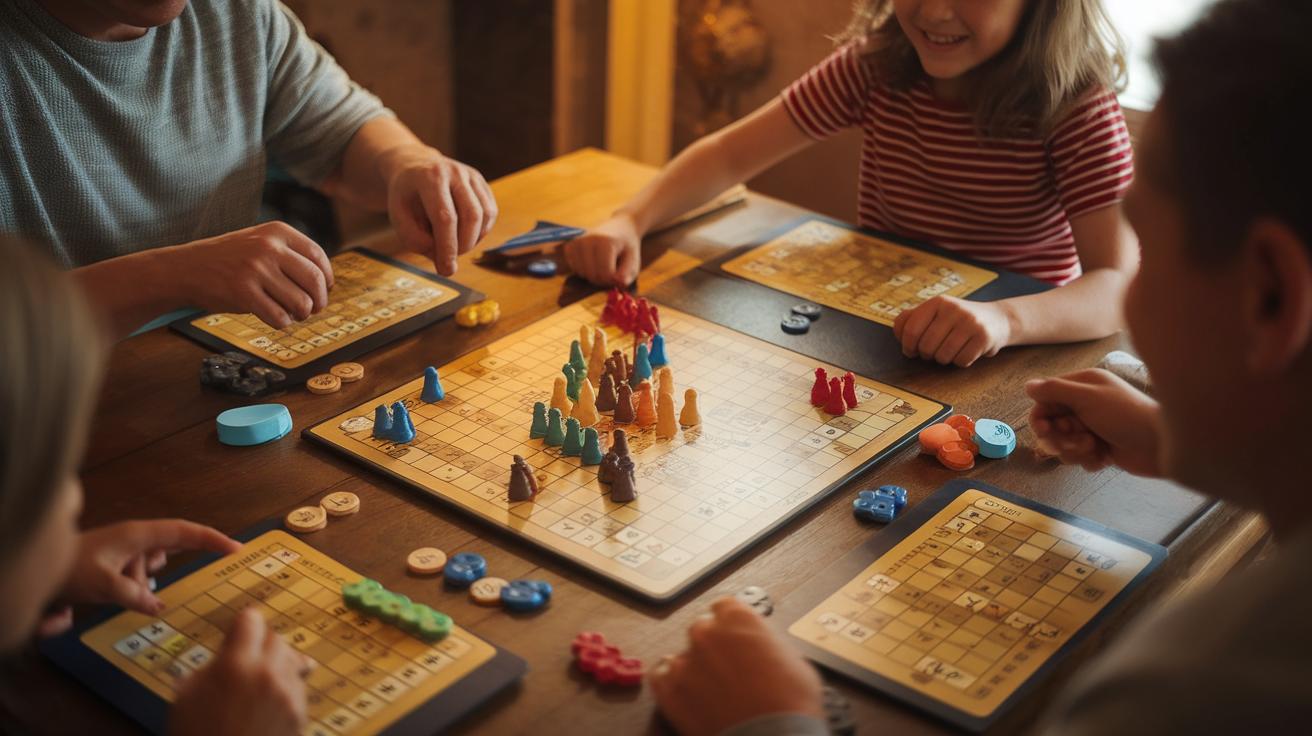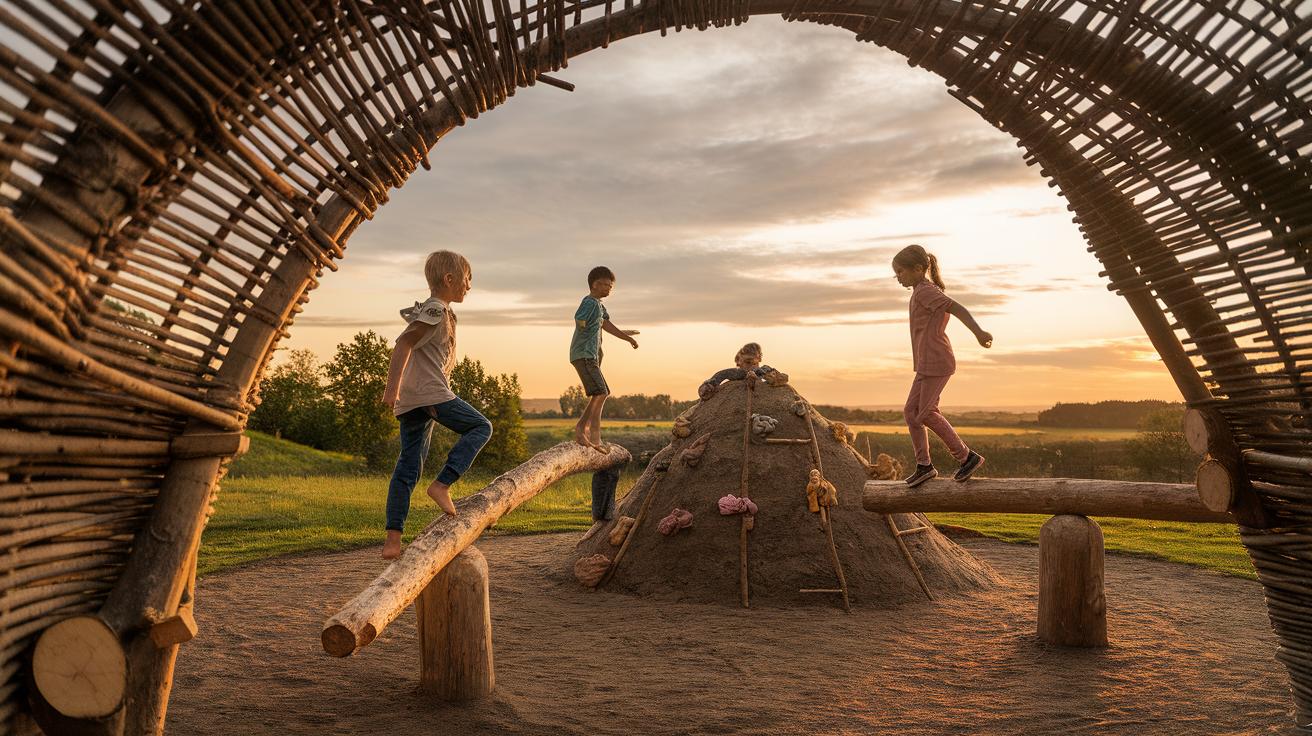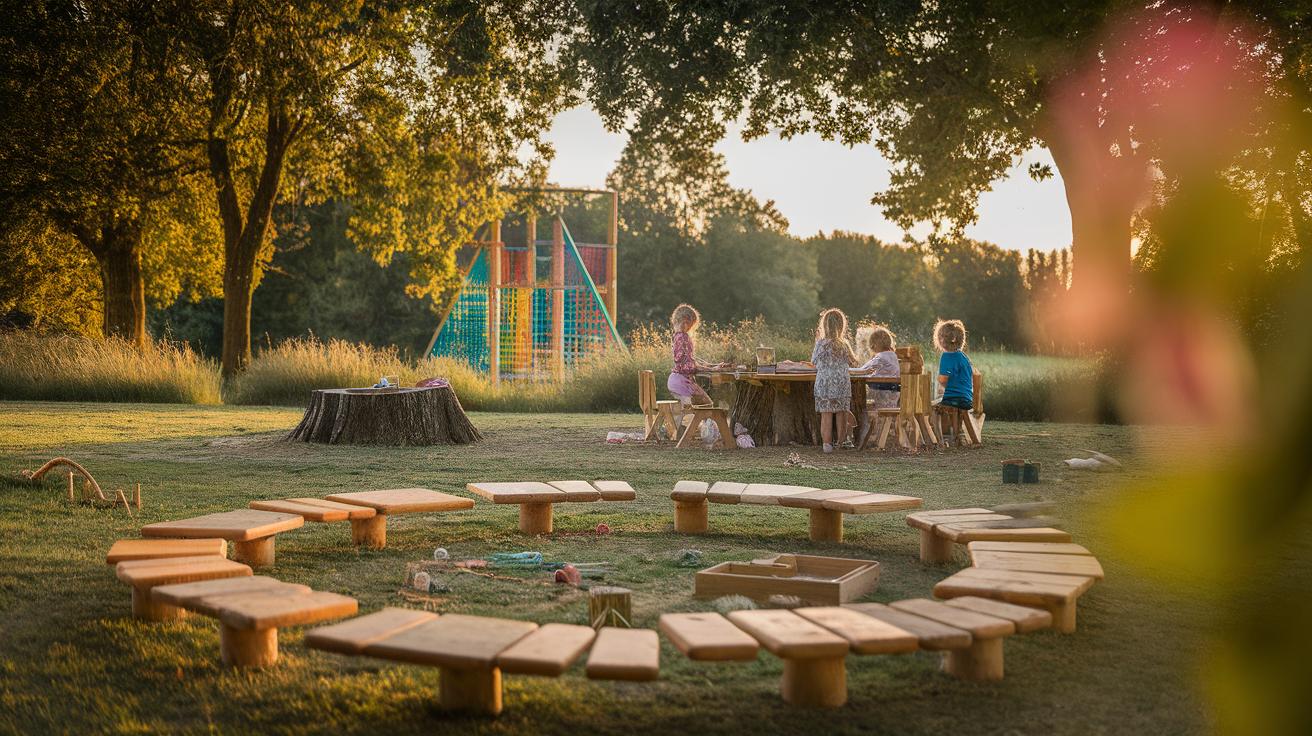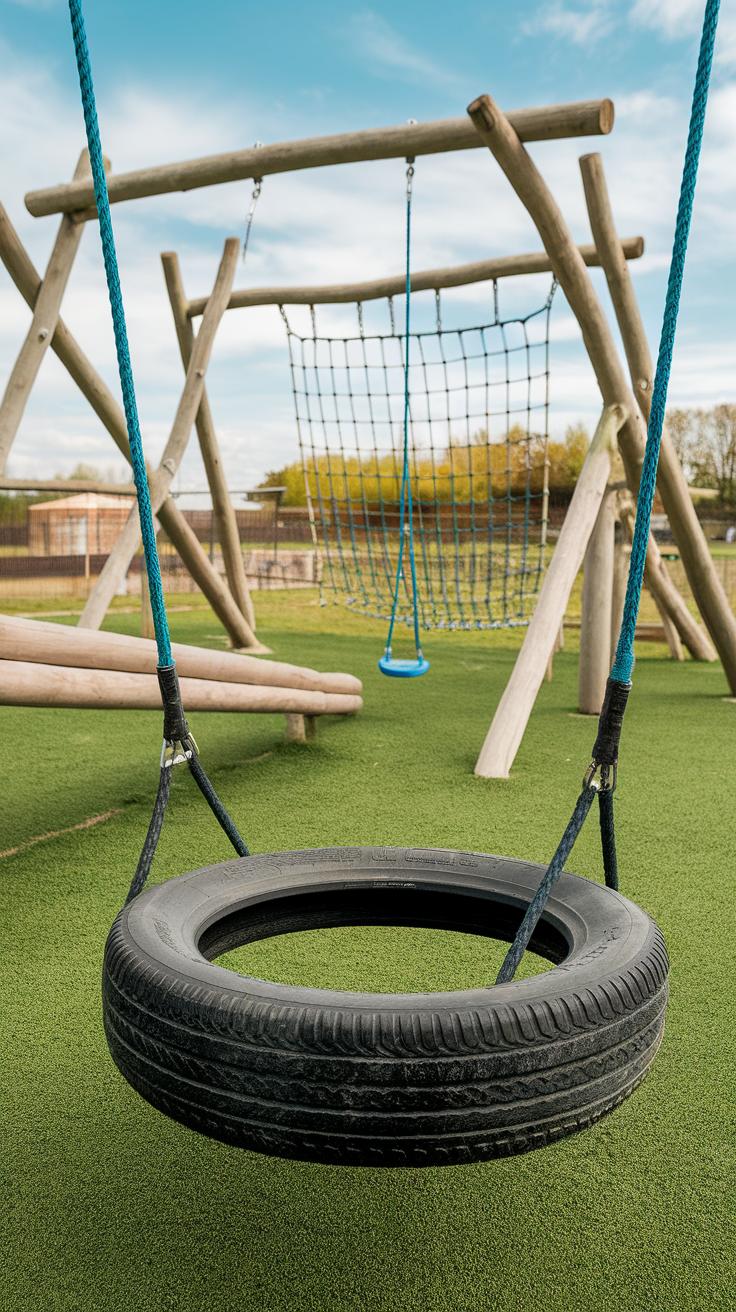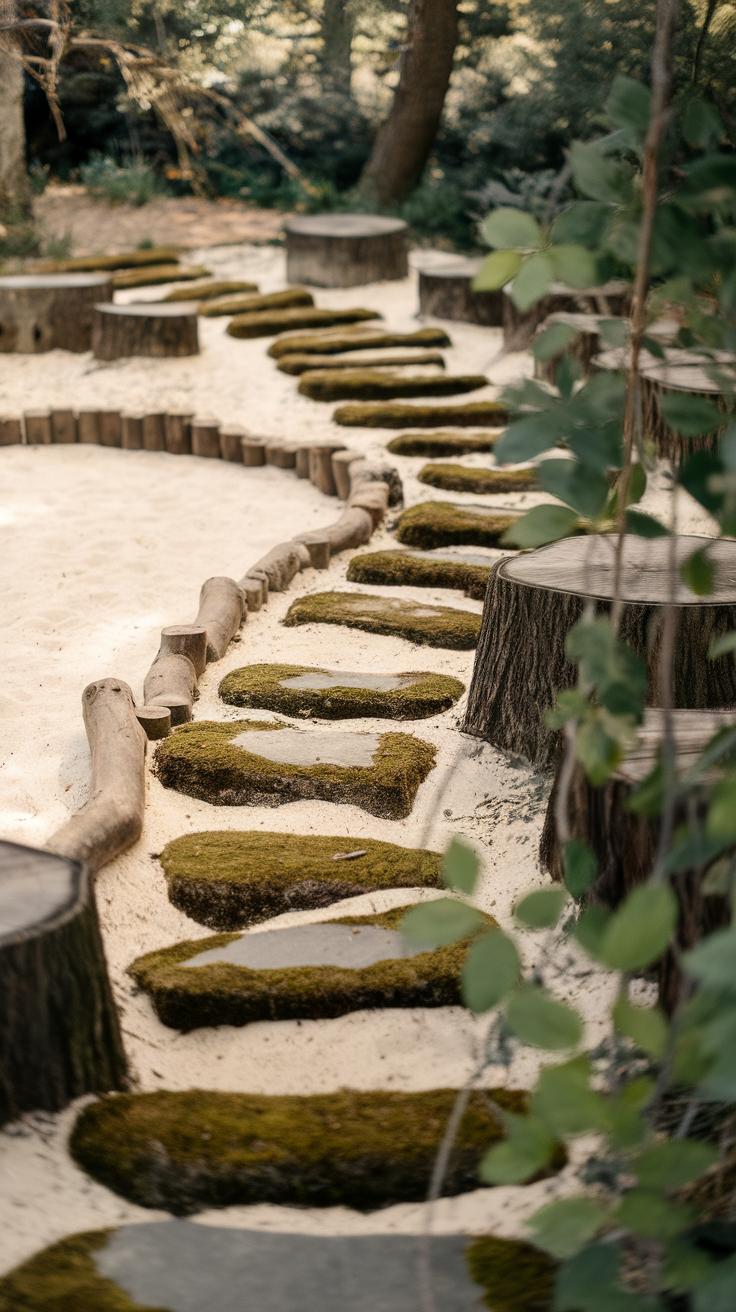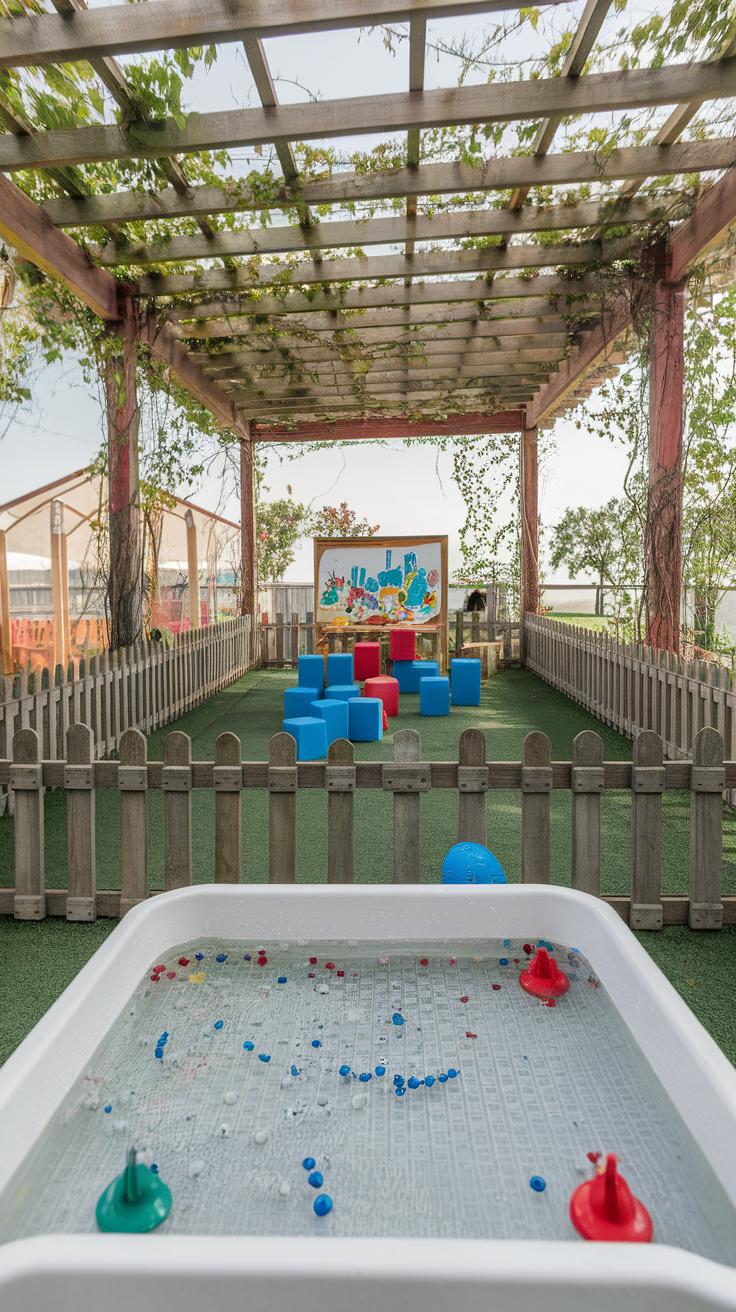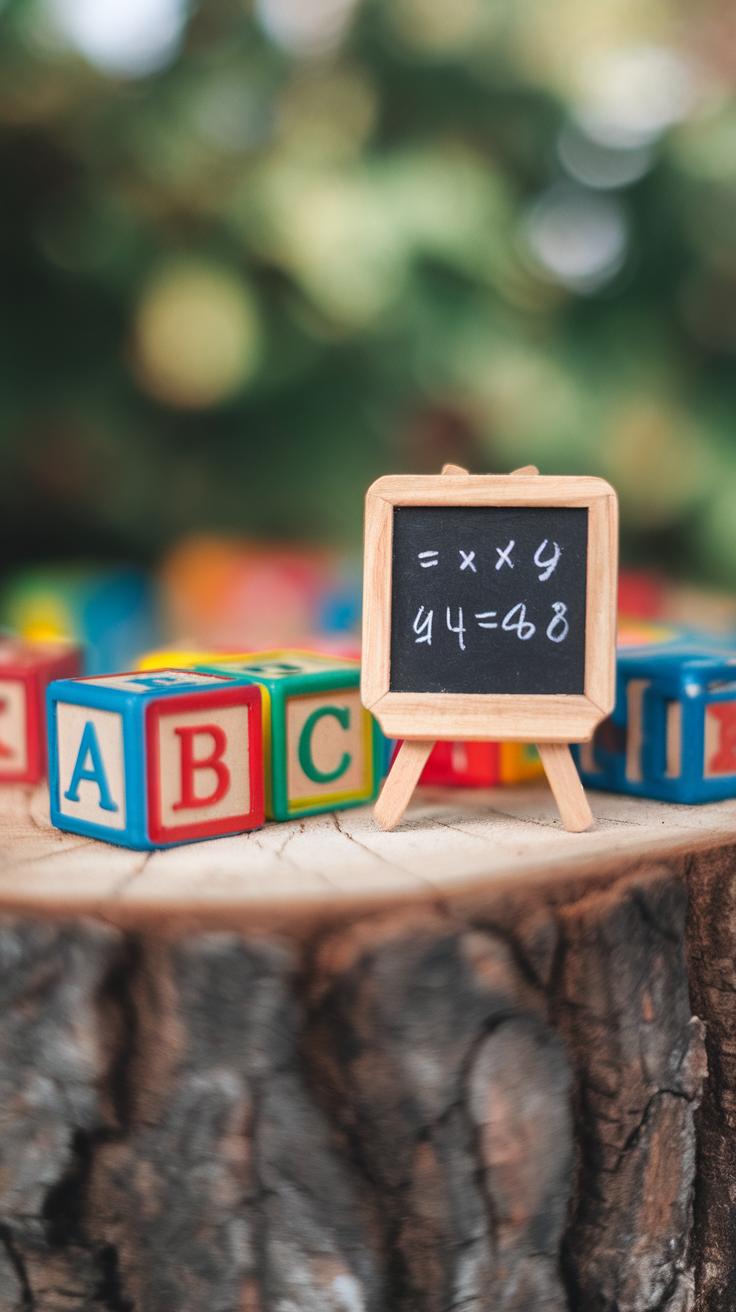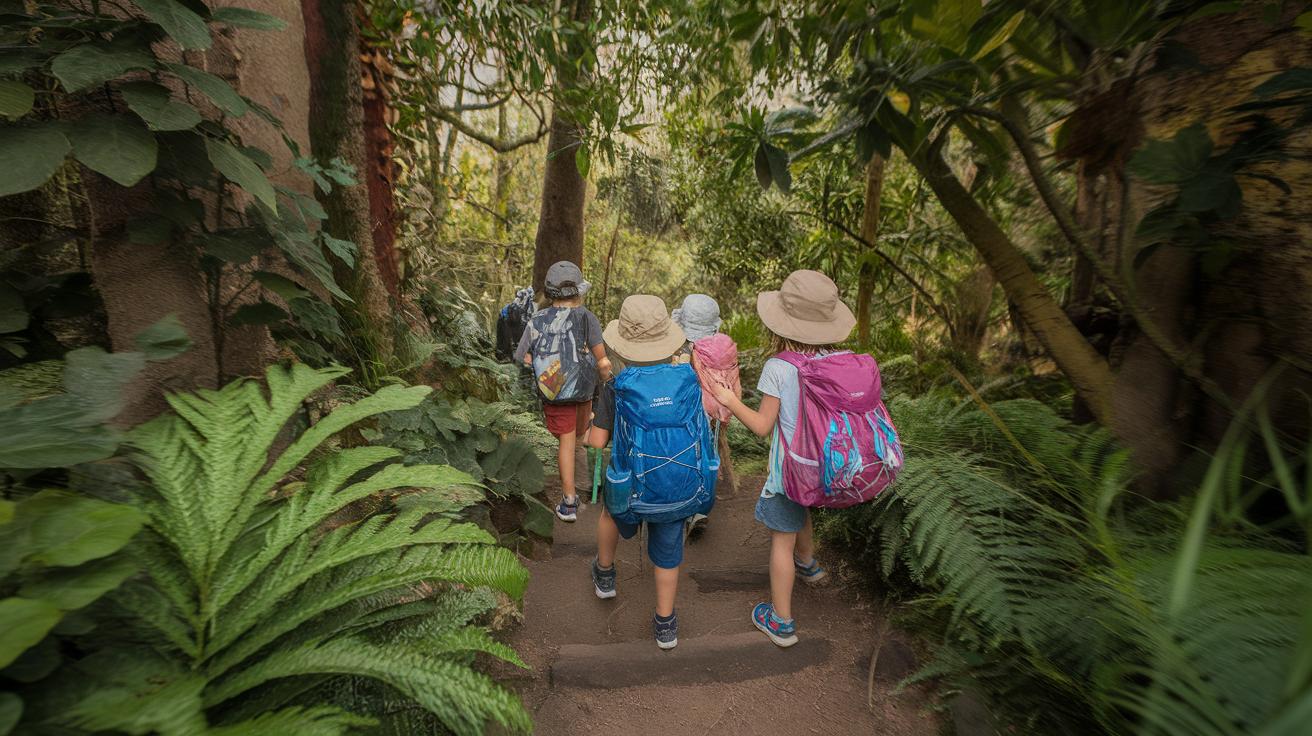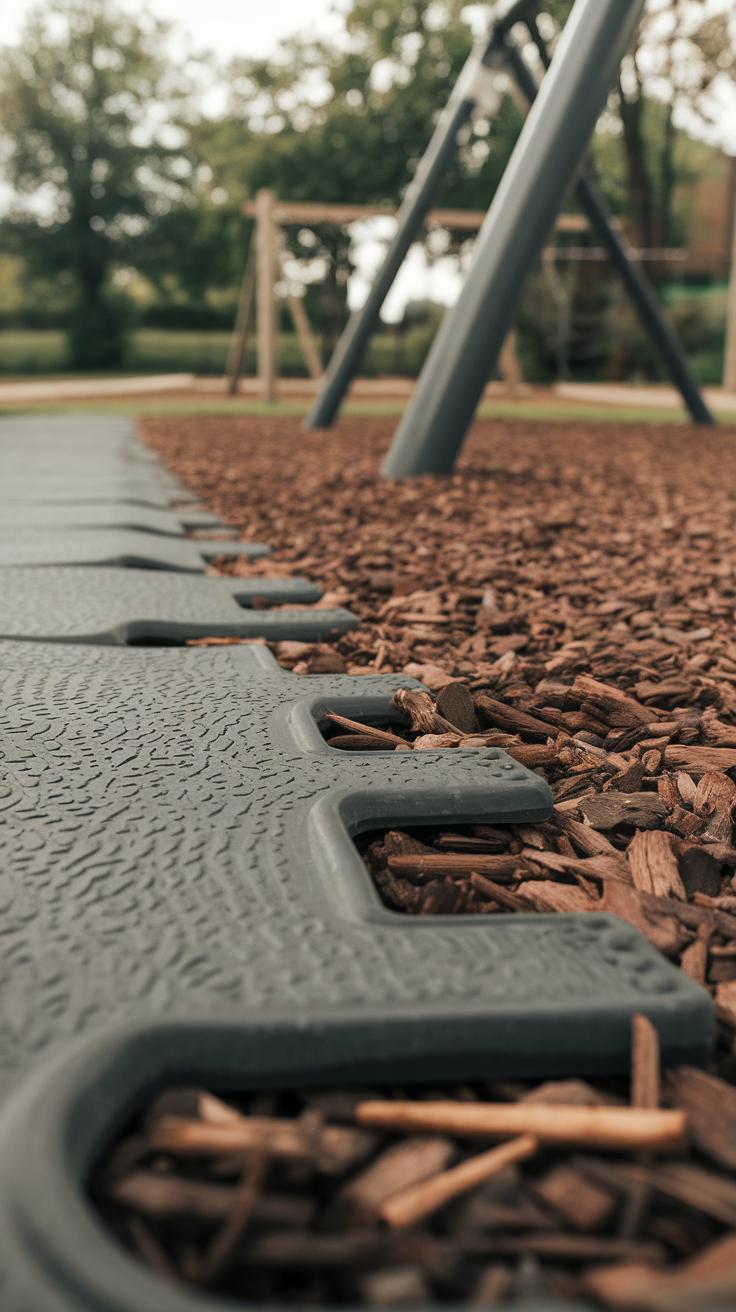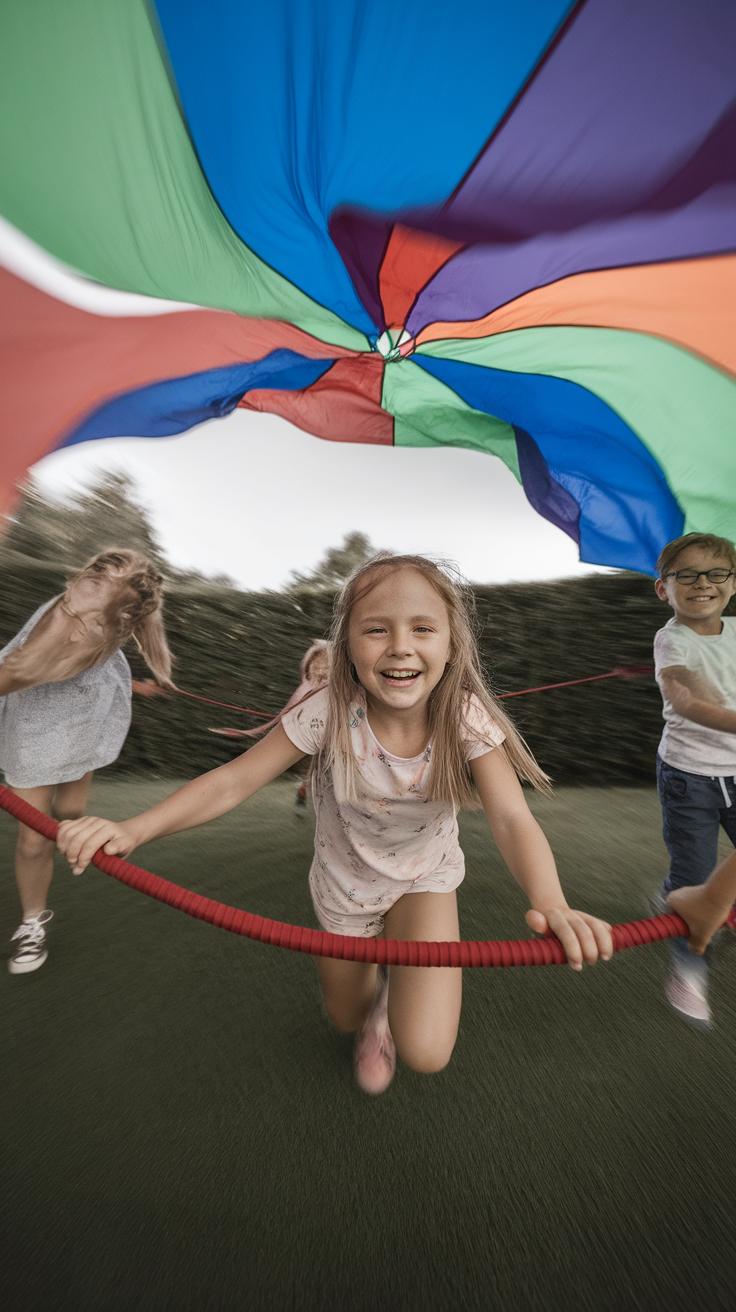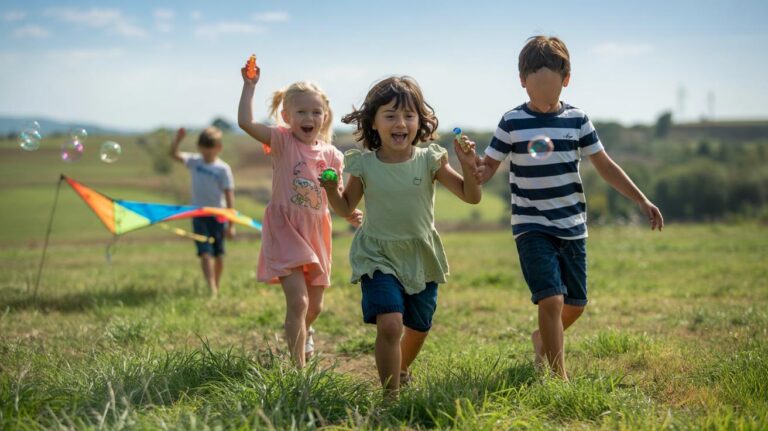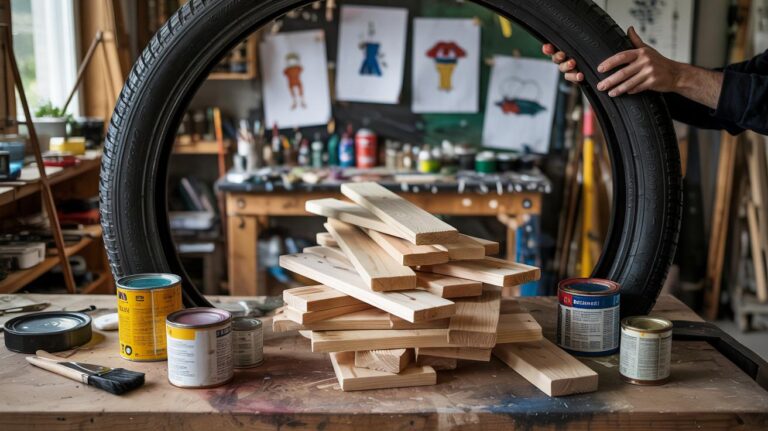Introduction
Your backyard can become a place where children learn, create, and grow through play. Designing a playground that encourages imaginative play offers more than just fun. It supports your child’s social, physical, and cognitive development. How do you build a backyard playground that sparks creativity and keeps kids engaged? This article explores practical ideas and tips to help you transform your outdoor space into a stimulating play area.
Imaginative play lets children experiment with roles, scenarios, and challenges that deepen their understanding of the world. Your backyard playground can be tailored to encourage this kind of play through various equipment and natural elements. When children play creatively, they develop problem-solving skills and learn to cooperate with others. What features make a backyard playground inviting and versatile? The following chapters break down essential elements and design strategies to inspire you and promote active, imaginative outdoor play for your family.
Benefits of Imaginative Play in the Backyard
Your backyard offers the perfect space for children to engage in imaginative play. This type of play helps kids develop in many ways. Physically, running, jumping, and climbing in the open air build strength and coordination. Social skills grow too, as children create stories, take turns, and cooperate while playing pretend. Cognitively, imaginative play sparks creativity and encourages flexible thinking by allowing kids to invent new scenarios and solve problems on the spot.
Why is the backyard ideal for this? It provides a natural and safe environment where kids control the space and pace of their play. Unlike some structured activities, your backyard lets children explore freely without strict rules. Would your kids enjoy turning a simple tree into a pirate ship or a fort? Offering such open-ended spaces fuels their ideas and motivates them to move and think in new ways.
How Imaginative Play Boosts Development
Imaginative play impacts children’s ability to think creatively. When kids pretend, they experiment with new roles and ideas. This grows their problem-solving skills because they often face challenges during play and figure out solutions independently. Emotional skills also develop as children express feelings and understand the perspectives of others in their pretend worlds.
Imagine your child building a make-believe store. They decide what to sell, how to interact with customers, and how to manage resources. This process enhances planning and decision-making skills. Would your child’s ability to handle real-life situations improve after playing in such ways? Most likely, yes.
Why Outdoor Play Matters
Outdoor play provides benefits that indoor settings cannot. The open space encourages more vigorous physical activity, helping children build endurance and motor skills. Fresh air and sunlight support overall health. In an outdoor setting, kids often play in groups, which boosts social skills and builds friendships through shared experiences.
Compared to indoor play, the backyard offers more variety and fewer distractions. Children learn to navigate uneven ground, work together in larger spaces, and adapt to changing weather. Ever wondered why kids spend hours outdoors without getting bored? The constantly changing environment keeps their curiosity alive and supports active, meaningful social interaction.
Planning Your Backyard Playground Space
Start by measuring your backyard carefully. Use a tape measure to determine the length and width of your available space for play equipment. Note any obstacles such as trees, garden beds, or uneven ground that might affect placement.
Consider how much space different play structures need. A swing set requires more clearance around it for safe movement. Smaller playhouses or sandboxes can fit into tighter corners. Mark potential areas with flags or chalk to visualize the layout.
Think about where sunlight falls during the day. Children need shade during hot months, so placing play areas near natural shade or where you can add a canopy helps keep them comfortable. Also, check if the ground is level or slopes. Flat terrain supports stable equipment; if your ground slopes, you may need to terrace it or choose low-impact play options.
Assessing Your Space for Playground Design
Look for spots that provide enough room for safe play. If your backyard has multiple sections, consider dividing larger play zones by age or activity to avoid overcrowding. Pay attention to the sun’s path. West-facing areas may get hot in the afternoon, while shaded spots encourage longer play sessions.
Inspect the terrain closely. Rocky or uneven areas not only pose safety risks but can limit what structures you use. Consider ground cover options like soft mulch or rubber mats to cushion falls. Do you have a spot that can double as an imaginative play zone and a physical activity area?
Think about nearby distractions too. Avoid placing playgrounds near driveways or busy walkways to reduce risk. Quiet and enclosed spaces can encourage engagement and creativity. What areas in your yard invite children to explore without interruptions?
Safety and Accessibility Factors
Provide clear, easy pathways to the play area. Smooth paths made with pavers or compacted soil help children of all abilities reach playground equipment safely. Step-free access supports wheelchairs and strollers, encouraging inclusion during play.
Follow safety guidelines for space around equipment. For example, swings need at least six feet clear in front and back. Soft, impact-absorbing surfaces can reduce injuries from falls. Install barriers or fencing to keep children within safe zones and away from hazards.
Consider your children’s specific needs. Low platforms, ramps, and handrails make equipment usable for kids with mobility challenges. Are there ways to adapt your design to create a welcoming space where all children can join the fun?
Essential Playground Equipment for Creative Play
Including key play equipment in your backyard can encourage children to explore different types of play and develop both creativity and physical skills. Swings help children experience rhythm and momentum, supporting balance and coordination. They also inspire imaginative play, such as pretending to fly or race. Slides offer children a sense of adventure and challenge, encouraging quick decision-making as they climb and descend. Climbing structures build strength and problem-solving skills by helping kids figure out the best routes. Playhouses create spaces for children to invent stories, assume roles, and engage socially. Each piece of equipment supports different ways to move, think, and interact, making your backyard a place where creativity and activity combine naturally. What equipment will best fit your children’s interests and your space?
Classic Equipment to Include
Swings, slides, and climbing frames form the foundation of any backyard playground. Swings demand physical effort and balance, which improves coordination and body control. When kids pump their legs on a swing, they exert energy and learn timing. Slides encourage children to climb repeatedly, strengthening muscles and giving a thrill of speed and risk-taking in a safe environment. Climbing frames develop spatial awareness and problem-solving since kids plan their climb and test their limits. These classic pieces invite children to test their physical skills while opening doors to imaginative stories about dragons, spaceships, or jungle gyms. What physical challenges will your kids enjoy most in your backyard?
Incorporating Playhouses and Role-Play Areas
Playhouses and themed zones give children settings to explore social skills and creativity through role play. These areas spark conversations, cooperation, and storytelling. A simple playhouse encourages kids to imagine living in a different world, whether it is a castle, a shop, or a secret hideout. Role-play areas allow children to take on different characters and scenarios, which teaches empathy and language skills. Designing a corner with costumes or flexible props transforms your backyard into a theater of endless stories. How could you create a space where your children invent new worlds and relationships every day?
Using Natural Elements to Enhance the Play Area
Your backyard becomes a richer place for play when you include natural materials. Plants, rocks, and sand offer textures and colors that boost sensory experiences and invite exploration. Children learn by touching, smelling, and moving through these elements, which help develop their creativity and physical skills.
Consider how a small garden patch can turn into a space for discovery. What kinds of plants can children touch or smell? What insects might they observe? These questions encourage children to connect with nature directly, sparking imagination beyond screens or toys.
Natural features also invite open-ended play. Rocks can be climbed, arranged, or used for building. Logs become balance beams or quiet seating. Sand encourages digging, shaping, and experimenting with tools. These materials adapt to whatever games children invent, supporting creativity and active play without strict rules.
Adding Plants and Gardens
Plants add more than color to your backyard; they create opportunities for hands-on learning. Children notice how plants grow, change, and respond to water and sunlight. You can involve them in planting flowers, herbs, or vegetables to teach patience and responsibility.
Gardens also stimulate the senses. Different leaf shapes, scents of herbs like mint or basil, and the feeling of soil enrich sensory play. Watching bees or butterflies visit plants connects children to natural cycles. You might ask, “How do you think these plants help the bugs?” This kind of thinking strengthens curiosity and care for the environment.
Using Rocks, Logs, and Sand
Natural materials like rocks, logs, and sand offer unique textures and shapes that encourage hands-on play. Smooth stones can be collected or stacked, teaching balance and fine motor skills. Rough logs provide surfaces for climbing or jumping off, building strength and coordination.
Sand invites children to dig, shape, and experiment. Adding tools like buckets or small shovels expands possibilities. When children build castles or tunnels in sand, they practice problem-solving and planning. You could ask, “What will happen if water mixes with this sand?” Such moments lead to curiosity and discovery.
Creative Play Zones for Different Activities
Organizing your backyard playground into distinct zones helps children enjoy a variety of activities. Dividing the space into areas for active movement, creative play, and quiet moments lets kids choose how they want to engage. This setup encourages diverse experiences that develop different skills.
Each zone should focus on meeting the specific needs of its activity type. For example, placing climbing structures and balance beams in the active zone supports physical challenges. Meanwhile, quiet corners with tables and seating invite creativity or relaxation. How can you make sure these zones blend naturally into your yard’s layout?
Designing zones also helps manage noise and energy levels. Kids can move from high-energy play to calm activities without conflict. This separation benefits both children and adults enjoying the outdoor space. What small changes can you make to tailor your yard into these distinct zones that inspire varied play?
Active Play Zone
Create a space that encourages movement with equipment like swings, slides, and monkey bars. Arrange the equipment with plenty of room to run and jump around safely. Adding mats or soft mulch can protect against falls.
Use open areas for games like hopscotch or obstacle courses. Portable cones and ropes can mark boundaries for different activities. Consider including balance beams or a climbing wall to build strength and coordination.
Think about how children will flow through this zone. Can they easily move between swinging, climbing, and running sections? How can you position equipment to encourage active group play while keeping safety in mind?
Quiet and Creative Corners
Set aside a smaller area with seating or low tables for drawing, crafts, or reading. Shade this spot with a small canopy or nearby tree to create a calm atmosphere. Equip it with storage bins for art supplies or books.
Simple additions like chalkboards or magnetic boards encourage imaginative scenarios and storytelling. Add cushions or bean bags to make this area inviting. Including natural items like pinecones or leaves can spark creative projects connected to nature.
Ask yourself how to design this space so kids feel comfortable staying longer to focus. What kind of materials and seating would inspire your child to build, read, or craft outdoors?
Incorporating Educational Play Elements
Adding educational features to your backyard playground can create a rich environment where children learn while having fun. You might include chalkboards mounted on a fence or wall, inviting kids to draw, write, or play games like tic-tac-toe. Chalk play supports fine motor skills and encourages creativity.
Puzzles designed for outdoor use, such as large foam or wooden pieces, stimulate problem-solving abilities. Incorporate alphabet or number puzzles that match with active games to blend movement and learning.
Nature observation tools, like magnifying glasses or simple weather instruments, invite kids to explore their surroundings closely. These features promote curiosity and help develop observation skills.
Ask yourself: What educational activities can you add that fit your space and your child’s interests? Tailoring these elements encourages children to return to the playground and engage deeply.
Tools for Learning Through Play
Toys that work well outdoors include balance boards, which teach coordination, and counting games crafted from natural materials like stones or sticks. A set of sensory bins with dirt, water, or sand encourages hands-on exploration.
Consider interactive wall panels with gears or movable shapes. These stimulate cognitive skills and can be easily fixed to playground structures. Outdoor musical instruments, such as drums or chimes, add sound and rhythm to playtime, supporting auditory learning.
Does your playground offer a range of materials to engage sight, touch, and hearing? Mixing different senses during play supports better learning outcomes and keeps children interested for longer periods.
Nature Exploration Stations
Creating dedicated spots to observe plants, insects, or weather turns your backyard into a mini science lab. You can set up a small garden patch where children plant seeds and watch their growth. This teaches responsibility and biology basics.
Install insect hotels or butterfly feeders to attract wildlife. Kids can observe behavior and life cycles firsthand. Add a weather station with simple tools like a rain gauge or wind sock to track daily changes.
Place binoculars, field guides, or journals nearby so children can record their findings. How can you design a discovery area that encourages questions and careful watching? This kind of space supports critical thinking and connects children to the natural world around them.
Materials and Safety Surfaces for Your Playground
Your backyard playground needs materials that last and keep your children safe. Choose equipment made from durable, non-toxic materials such as hardwood, powder-coated metal, or heavy-duty recycled plastic. These options resist weather damage and avoid harmful chemicals, protecting your kids as they play. Wood treated with safe preservatives prevents splinters, while metal components should not rust or corrode. Ask yourself, how long should the equipment last in your climate? This can guide your choices.
Soft surfaces underfoot prevent injuries from falls, a common risk in playgrounds. Cover the ground with materials like engineered wood mulch, shredded rubber, or rubber mats. Mulch drains well and cushions falls, but needs regular topping up. Rubber tiles offer excellent shock absorption and require less maintenance. Think about which option fits your budget and space best. What surface will your children feel most comfortable running and jumping on? A properly chosen surface reduces injuries and keeps playtime fun.
Selecting Equipment Materials
Look for playground gear built with weather-resistant materials suited to your backyard. Cedar and redwood are naturally resistant to decay and insects, making them good choices for climbing frames or swings. Avoid wood treated with harsh chemicals. Recycled plastic withstands sun and rain without splintering and requires little upkeep. Metal parts should have a powder-coated finish to prevent rust. If you live in a rainy area, focus on rust-proof and water-resistant options. How often will you be outdoors to check equipment? Choosing long-lasting materials saves you repair time and keeps play safe.
Safe Ground Surfaces
Playground flooring must cushion falls and limit injuries. Engineered wood mulch or shredded bark absorbs shock well and is affordable but needs replenishing to maintain thickness. Rubber mulch made from recycled tires offers strong impact absorption and drains well but costs more upfront. Rubber mats or tiles provide a flat, durable surface with excellent cushioning and require little maintenance. Grass looks nice but does not protect from falls as well, especially on hard soil. Is your priority comfort, cost, or ease of maintenance? Matching surface type to your children’s play style helps keep playtime secure and enjoyable.
Maintaining and Updating Your Playground
Routine Maintenance Tips
Check your playground equipment often for loose screws, cracks, or sharp edges that could cause injury. Make sure swings, slides, and climbing structures stay sturdy by tightening bolts regularly. Inspect wooden parts for splinters or rotting, especially after rain or snow. Clean plastic and metal surfaces with mild soap and water to remove dirt and grime. Remove any debris like leaves or sticks that might create slipping hazards. Look under swings and slides for worn ground surfaces like mulch or rubber padding and add more if needed. Keeping your playground clean and safe not only protects children but extends the life of your equipment. How often do you set up a regular maintenance schedule to catch problems early?
Refreshing the Playground Experience
Try rotating toys and movable play items every few weeks to keep children’s interest alive. Swap a sandbox for a water table or replace balls with jump ropes to create new challenges. Adding small features like chalkboards, balance beams, or themed play tents invites fresh imagination. Pay attention to what your kids enjoy most and introduce new elements that build on those interests. Even simple changes, such as new colors or rearranged equipment, can make the space feel different. Have you considered involving your children in choosing what to add next? Their ideas can help you create a playground that grows with them and encourages ongoing creativity and activity.
Encouraging Social Play and Group Activities
Your backyard can become a place where children build friendships and learn teamwork. Designing spaces that invite several kids to play together encourages sharing and communication. When children interact in group settings, they develop skills such as problem-solving and empathy.
Choose playground equipment that naturally supports team play. Large swings that two or more children can enjoy at once or balance beams arranged for relay races promote cooperation. Create open areas for games like tag, hopscotch, or group storytelling. Consider circular seating spots or small tables where kids can plan and carry out group projects or crafts.
How often do your children invite friends outside? Fostering social play helps them feel included and boosts their confidence. Spaces that encourage teamwork also reduce conflicts and help kids enjoy their time together more fully.
Designing for Cooperative Play
Group games thrive when the environment supports collaboration. Select equipment like multi-person seesaws, climbing nets, or rope courses that require teamwork. These tools challenge children to depend on one another for balance and success.
Create zones for team activities, such as a sandbox with enough room for multiple children or a small garden patch where kids grow plants together. Seating arranged in circles invites group discussions or game planning. Adding chalkboard walls or outdoor art stations encourages kids to cooperate on drawings or puzzles.
Ask yourself: does your backyard provide enough shared spaces that naturally gather children? Designing with cooperation in mind makes your playground a hub for connection and fun.
Facilitating Group Activities and Events
You can use your backyard to host engaging group playdates and challenges that promote social bonds. Plan simple events like relay races, scavenger hunts, or obstacle courses using your existing equipment. These encourage teamwork and friendly competition.
Set up areas for group crafts, such as painting stations or building blocks where children create together. Provide easy access to snacks and rest spots to keep energy high and moods good. Thoughtful scheduling, like having a regular weekly playdate, creates routine and anticipation for group fun.
Have you tried inviting the neighborhood kids for a themed event or a collaborative garden project? Group challenges and celebrations keep children coming back and deepen their friendships, turning your backyard into a space full of joyful shared memories.
Adapting Your Playground as Children Grow
Children’s interests and abilities change quickly. Your backyard playground should adapt to these shifts. Start by observing how your child uses the space and what they enjoy at different ages. This helps you plan changes that keep play engaging and safe.
Consider which equipment or features work now and which might need updates or removal. For example, low slides and gentle swings suit toddlers, while climbing walls and monkey bars challenge older kids. Changing the layout or adding new elements can keep the space exciting.
Ask yourself if the play area allows room for growth. Will you add features that encourage balance, strength, or creativity as your child grows? Think about using modular equipment or movable pieces that fit various age groups. Adaptability ensures your playground remains a favorite spot for years.
Adjusting Equipment for Different Ages
Safety is key when modifying playground equipment for different ages. For toddlers, lower platforms and soft ground surfaces reduce risk. Use enclosed areas or rails around elevated spots to prevent falls. Equipment like mini slides or sandboxes suit their smaller size and developing skills.
As children grow into preschool and elementary age, raise platform heights and add more challenging climbing options. Swings can change from bucket seats to regular ones. Ensure all equipment meets safety guidelines for the intended age group.
Check regularly for worn parts or hazards as you adjust. Testing changes yourself helps confirm safety. Does each piece invite active play but not risk injury? This careful balance will keep your kids engaged and protected.
Planning for Future Expansion
When adding new play elements, plan with space and flexibility in mind. Think about having clear zones for different activities—quiet areas, running spaces, and climbing stations. This allows each child to find a spot that fits their mood and energy.
Consider the overall size of your yard. Can you leave room for future equipment like a zip line or a treehouse? Think about features that serve multiple purposes, like a climbing rock that doubles as a seating wall. This maximizes both fun and space.
Prepare for maintenance too. Durable materials reduce upkeep and keep your playground safe as it expands. Are you ready to invest time and resources to keep the space fresh and inviting as your children’s needs grow? Planning ahead makes the transition smoother for both you and your kids.
Conclusions
Designing a backyard playground for imaginative play requires thoughtful choices to balance safety, creativity, and physical challenges. Integrating diverse play equipment and natural components gives children space to invent scenarios and develop skills. By carefully planning your backyard play area, you can provide an environment that encourages exploration and growth every day. How will you adapt your space to your child’s interests and needs?
Remember that your involvement and encouragement fuel your child’s imaginative play. Offering open-ended materials and allowing freedom to experiment fosters creativity and confidence. Keep observing how your child uses the playground and adjust the setup to inspire new adventures. With these ideas, your backyard can become a place where imagination flourishes and happy memories are made.



